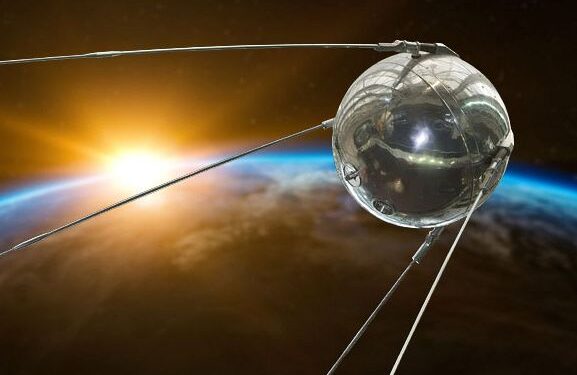On 4 October 1957, the Soviet Union launched Sputnik 1, the world’s first artificial satellite, into orbit, marking the beginning of the space age and triggering a global race for technological and scientific dominance. The event reshaped geopolitics, science, and defence strategies, with consequences still felt today.
The launch that shocked the world
Sputnik 1 was a polished metal sphere measuring just 58 centimetres in diameter and weighing 83.6 kilograms. Despite its modest size, the satellite’s successful launch atop the R-7 rocket stunned the international community. Its beeping radio signals, detectable around the globe, became a powerful symbol of Soviet scientific achievement and Cold War rivalry.
Cold War context and U.S. reaction
The launch came during a period of intense competition between the United States and the Soviet Union. While the U.S. had been preparing its own satellite programme under Project Vanguard, it was beaten to orbit by Moscow. The achievement raised concerns in Washington about Soviet military capabilities, particularly in missile technology, as the R-7 rocket was originally designed to deliver nuclear warheads. This led directly to the acceleration of the U.S. space programme, culminating in the creation of the National Aeronautics and Space Administration (NASA) in 1958.
Scientific significance of Sputnik
Although Sputnik 1 only transmitted signals for 21 days before its batteries were depleted, its mission provided valuable scientific data. Scientists were able to study the density of the upper atmosphere, measure radio-signal behaviour, and refine orbital mechanics. The satellite orbited Earth every 96 minutes and continued circling the planet until it burned up in the atmosphere on 4 January 1958.
The start of the space race
Sputnik 1’s success inaugurated a new era of competition known as the space race. Over the next decade, the U.S. and the U.S.S.R. poured resources into achieving technological milestones, from launching humans into orbit to ultimately reaching the Moon. The competition spurred rapid advances in engineering, communications, and computing, many of which laid the foundation for modern satellite systems and global connectivity.
Legacy and global impact
The legacy of Sputnik 1 extends far beyond Cold War politics. It sparked worldwide interest in science and technology, reshaped education policies, and inspired a generation of engineers and scientists. Today, over 8,000 active satellites orbit Earth, underpinning everything from navigation and climate monitoring to global finance and communication systems. What began with Sputnik’s simple beeps evolved into an infrastructure central to the modern economy.
Newshub Editorial in Europe – 4 October 2025



Recent Comments